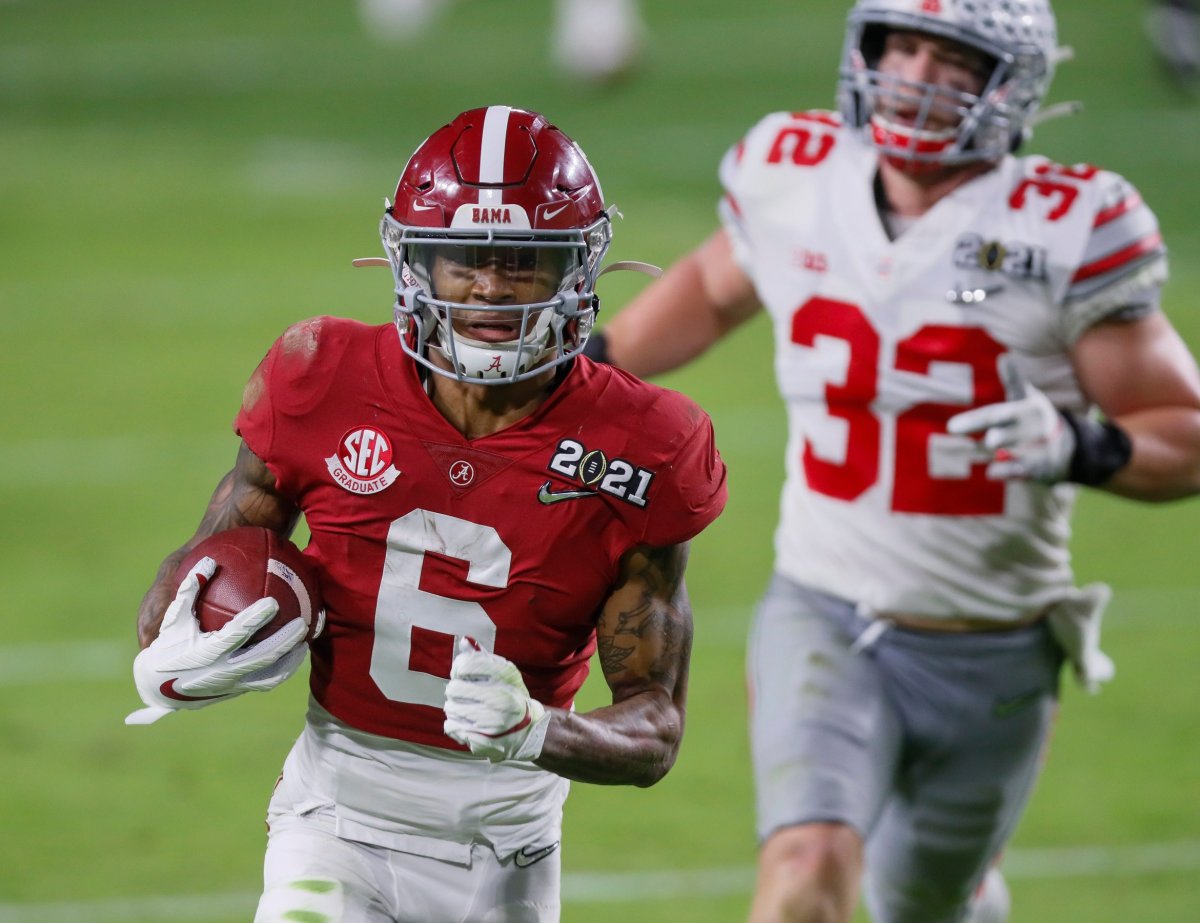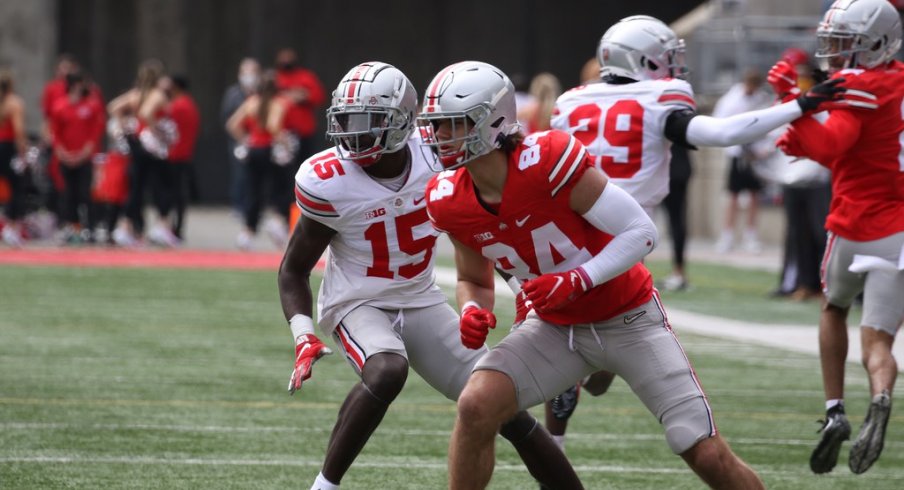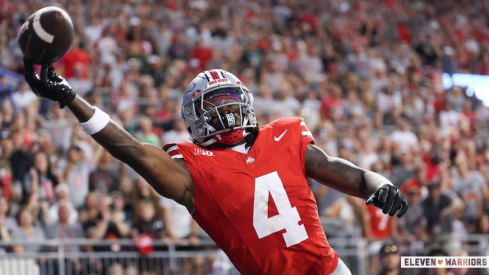Let’s play a game…
Here are two plays from the opening drive from Ohio State’s Spring Game. I want you to tell me the differences between them (beyond the targeted receiver):
If you’re a regular Film Study reader, you can probably recognize that they are both the same play, a spacing concept known as Scatter, meant to stretch the defense horizontally. Additionally, you probably see that the Buckeye defense is playing man-coverage on both snaps, rather than dropping into zones.
The reason I showed these seemingly identical plays, despite having dozens from which to choose within OSU’s annual spring scrimmage, is that they tell me more about Kerry Coombs’ plans to remake a pass defense about which I, and many others, spent far too much time decrying throughout the 2020 season.
Sure, the long-awaited debut of a hybrid safety/linebacker known as the Bullet, replacing the SAM linebacker in the Buckeyes’ base defense is surely the biggest change from last season. Having an athlete like Craig Young manning the edge of the box instead of a 250 lb linebacker undoubtedly gives the unit much more flexibility when defending interior pass concepts.
But if there’s one thing that we’ve learned from watching the Scarlet and Gray defense over the past two seasons, it’s that talent and athleticism can’t overcome predictability.
In 2019, opponents seemed shellshocked by the Buckeyes’ willingness to simply line up with the same personnel and alignment on virtually every play and employ one of just two coverages. In 2020, offenses seemed more than happy to take advantage of such predictability, however, using Ohio State’s simplicity against itself by isolating superior athletes (such as a Heisman Trophy-winning wide receiver) against the unit’s weaker pass defenders (such as the run-stuffing middle linebacker).

Make all the jokes you want about Tuf’s 40-time, but there isn’t a middle linebacker in America who was going to cover DeVonta Smith on that route. It’s not the player’s fault he got smoked, his coordinator should forever own that mistake for allowing the opponents to create such an embarrassing mismatch.
But based on these two boring, Spring throws you probably forgot about 10 seconds after watching them take place live, I have hope for Coombs’ plan to evolve.
Upon a closer look, we can see a subtle change in the way the interior defenders handle the routes of the tight end and running back. Typically, when playing man-coverage, we’d see the OSU defense match-up with cornerbacks on the outside (#1) receivers, the next defender inside (previously the SAM, now the Bullet) taking the #2 receiver inside, leaving the inside linebacker responsible for the running back.
As we see, the Buckeye defense is aligned in such a way on both snaps:

Yet on the first snap, we saw the Bullet and inside ‘backer switch roles on the fly, using a technique known as Banjo coverage.
Let's be clear: this isn’t rocket science. The outside defender takes the outside route while the inside route takes the one coming his way.

It’s hardly new, either. Plenty of coaches emolyed it in the 1990s as a counter to the horizontal stretches brought forth by the then-popular West Coast Offense. The tactic was so successful that coaches like a young Bob Stoops would use it as the foundation of the pattern-match defenses seen today.
So no, Kerry Coombs isn’t exactly reaching new frontiers by incorporating a tactic that’s no different than yelling ‘Switch!!’ during pick-up basketball games at the YMCA. However, by asking a hodgepodge unit made up of mostly second and third-string defenders to employ such a technique on the opening drive of the Spring Game shows that Coombs is already building answers within his system.
Remember, this was a glorified game of touch football that saw almost no pre-snap motion from the offense or blitzing from the defense. This contest featured only the most basic elements of what Ryan Day’s offense and Coombs’ defense will be come the fall.
Yet Coombs showed that finding ways to keep eliminate mismatches and keeping the offense slightly off-balance was so paramount that it belonged in the game plan anyway.
The veteran coach told reporters at the beginning of spring practice that man-coverage would remain his unit’s fastball, despite cries from many to incorporate more diversity in scheme. But although he’s not making wholesale changes, one can only assume that this was just the first of many wrinkles Coombs has up his sleeve.



